Grand Seiko Just Opened Its Watchmaking Studio to the Public. Here’s a Look Inside.
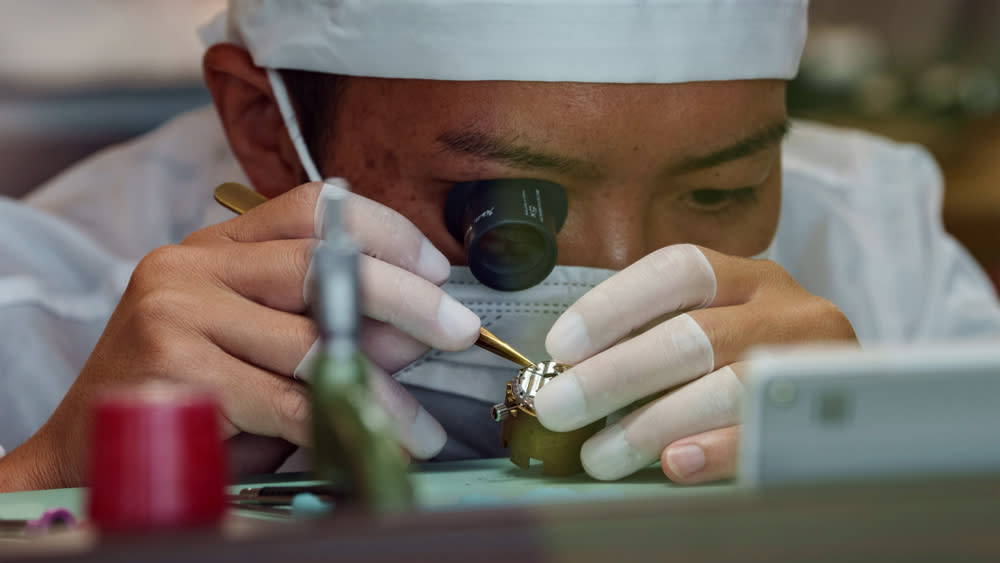
In the Japanese language, Shizukuishi, the name of a small town in the north of Honshu, Japan’s main island, translates to “water trickling on stone.”
It’s a fitting detail on a mid-September morning at Grand Seiko Studio Shizukuishi, the luxury watch brand’s 3-year-old mechanical watchmaking atelier in Iwate prefecture: Just beyond the lobby’s floor-to-ceiling windows, rainwater streams from the roof to a rock garden below, as if on cue.
More from Robb Report
Girard-Perregaux's Latest High Horology Timepiece Was 20 Years in the Making
Louis Vuitton's Tricked Out New Watch Was Created With Independent Horologist Rexhep Rexhepi
David Beckham Wore a No-Nonsense Tudor Black Bay Watch at Qatar's F1 Grand Prix
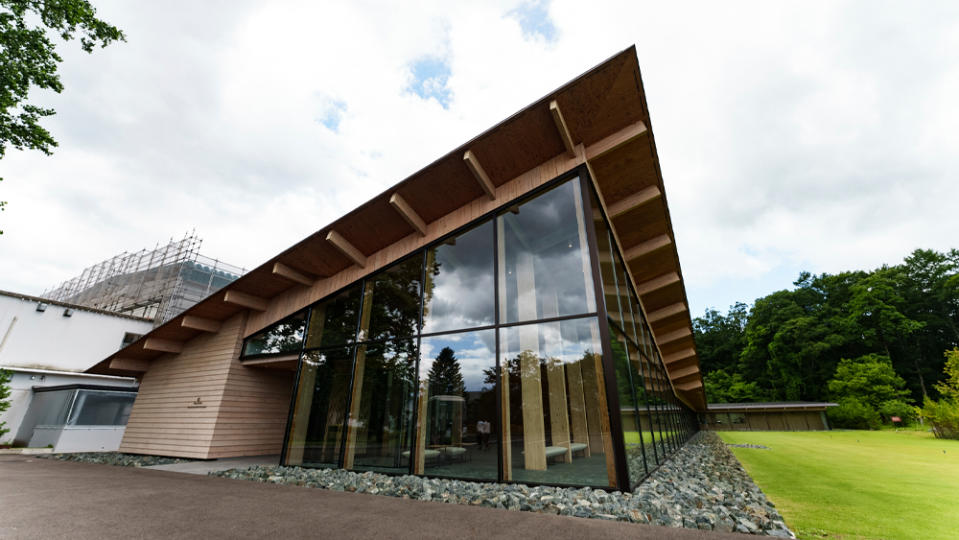
While the watchmaking that goes on here has much in common with the techniques familiar to fans of the Swiss watch industry, the studio could never be mistaken for a workshop in Geneva, Schaffhausen, or even the Vallée de Joux.
That’s because the 21,250-square-foot Grand Seiko Studio Shizukuishi—with its soaring triangular ceiling, lightly scented pillars of local red pine and walls built according to the principles of yamato-bari, a traditional Japanese technique in which wooden boards are applied to the wall to create an uneven surface that enhances the interplay between light and shadow—is a singular reflection of its home in this mountainous region more than two hours north of Tokyo by bullet train.
Designed by the celebrated Japanese architect Kengo Kuma, the atelier, which is open to members of the public by appointment, has a warm yet minimalist vibe that embodies the Japanese concept of “ma.” The word roughly translates to “negative space,” but it has a deeper meaning akin to “gap” or “pause,” based on the idea that what’s not there lends shape to what is.
On this day, what’s not there—because it’s obscured by rainclouds—is Mt. Iwate, the 6,686-foot peak that lies about 12 miles north of Shizukuishi and is usually visible from the studio’s north-facing windows. Despite its ma-like absence, the mountain, a dormant volcano, maintains a towering figurative presence in the studio, where mechanical timepieces featuring Grand Seiko’s signature Mt. Iwate dial—a pattern designed to recall the summit’s ridged contours—are produced.
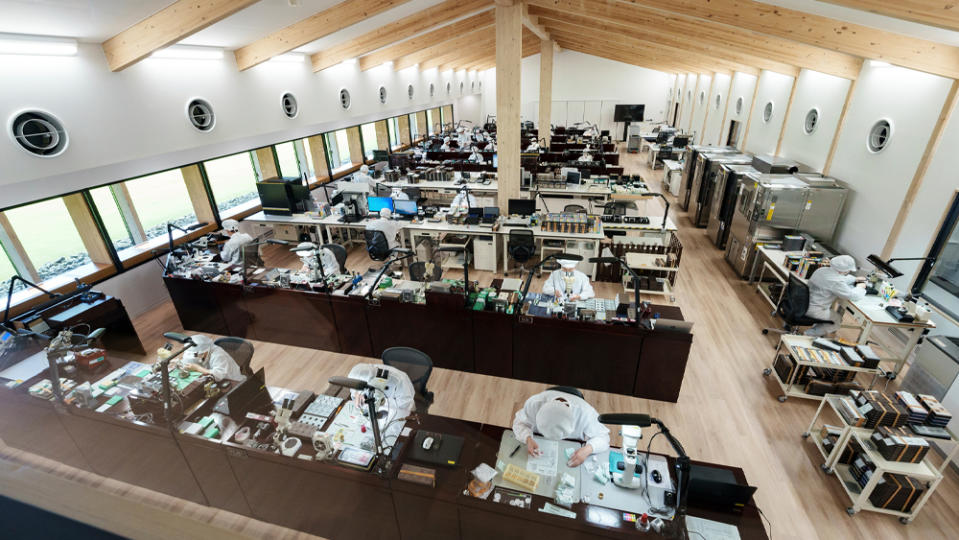
Visitors to the studio, which opened in 2020 in time to celebrate Grand Seiko’s 60th anniversary, learn this fact in the exhibition space near the entrance. Eight wooden showcases arranged side by side in groups of two contain a collection of artifacts that tell the Grand Seiko story, from its birth in 1960—represented by the brand’s first wristwatch, an elegant yellow gold dress model—to its modern-day technical prowess as a maker of highly-finished, uniquely Japanese timepieces.
For those unfamiliar with Grand Seiko’s history as Seiko’s younger and more luxurious sibling, it’s worth noting that the brand was born of a desire to make the finest and most practical timepieces in the world. Until 2010, the watches were sold strictly in the Japanese market. Over the ensuing years, however, the brand began to earn a cult following in the U.S. and Europe, drawing so much interest that its parent company, Seiko Watch Corp., spun the marque off in 2017 as its own independent brand.
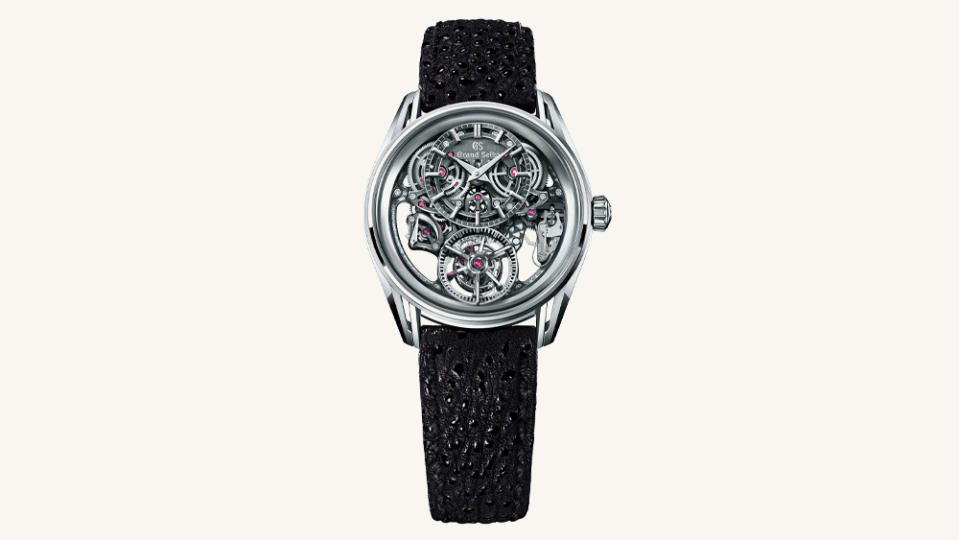
Grand Seiko’s superlative approach to watchmaking plays out in the details, from subtle aesthetic flourishes such as the Shizukuishi River finish of its movements (the brand’s answer to Switzerland’s Côtes de Genève) to highly technical accomplishments, including its 2008 introduction of Micro Electro Mechanical Systems designed to make Grand Seiko’s watch components lighter and therefore more efficient.
One memorable display in the exhibition space features a grain of rice beside a minuscule screw from one of the brand’s in-house hairsprings. At one-third of a millimeter in size, the head of the screw is dwarfed by the rice grain, a powerful reminder of the marvels of microengineering.
The Tentagraph, Grand Seiko’s first-ever mechanical chronograph, is the marvel incarnate. Introduced in March, at Watches and Wonders Geneva, the $13,700 model is an in-house column-wheel chronograph with a 10-beat movement (the new Caliber 9SC5) and an exceptional 72-hour power reserve. Brimming with nearly 400 parts, the watch is assembled, adjusted, tuned, cased, and inspected here at the studio, in a clean room staffed by trained artisans in white lab coats seated at benches made from the dark-colored wood of the Japanese zelkova tree.
Two things set the Tentagraph apart in a market saturated with chronographs, both of which represent the essence of Grand Seiko. First are the practical concerns that influenced its design, including durability, legibility, beauty, and ease of use; and second are the subtle details that, to the trained eye, make clear the watch is a product of Grand Seiko’s distinctively Japanese form of craftsmanship.
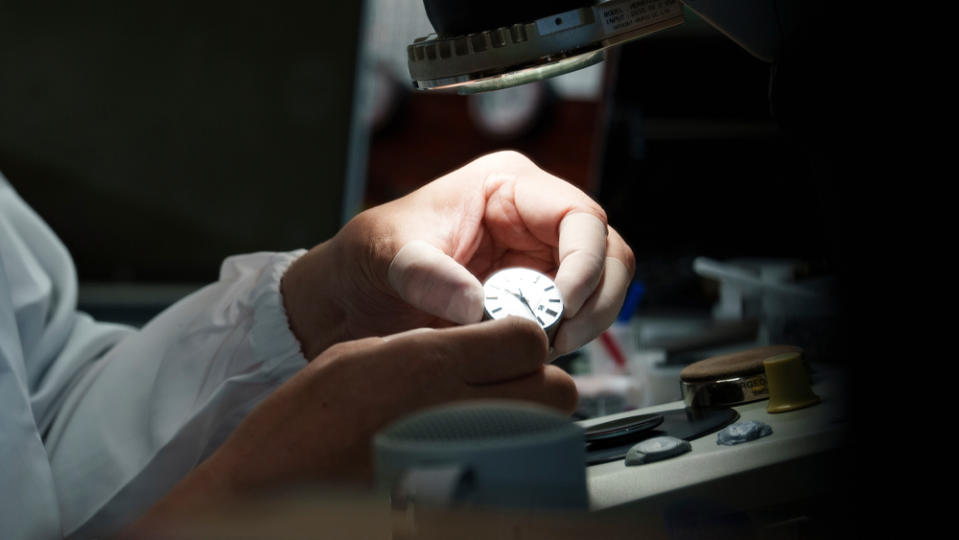
The Mt. Iwate dial, for example, has a deep blue hue meant to evoke the night sky above the mountain, and its case, fashioned from lightweight titanium, bears the brand’s trademark zaratsu polish, an exacting process designed to create a distortion-free, mirror-like finish.
Beyond those physical details, however, is a philosophy that underpins the very soul of the brand. “The importance of nature to Grand Seiko is reflected in every corner of the design,” explains Yoshihiro Kubo, general manager of the public relations department at Morioka Seiko Instruments, the Seiko Group Corp. subsidiary and movement parts manufacturer with whom the studio shares a campus.

In 2019, Grand Seiko codified that ethos, and the craftsmanship, or takumi, that brings it to life, in a formal brand philosophy known as “The Nature of Time.” Evident in the nature-inspired dials that have been a hallmark of Grand Seiko since 2005, when its beloved “snowflake” dial was introduced, the brand’s reverence for nature also manifests in the care and attention to detail lavished on the studio’s lush surroundings.
In September, the lawn that fronts the building—a grazing ground for a goat-antelope species known as the Japanese serow—is still a verdant green, as are the 1,000 trees, mostly red pine and birch, that dot the property. But October is, apparently, even prettier. Says Wataru Inoue, our studio tour guide: “Autumn, when the leaves outside turn red and yellow, is the most beautiful.”
In true Japanese fashion, the subtleties of the changing seasons are not lost on Grand Seiko’s artisans. Just don’t be surprised to find them reflected on the dial of the brand’s next wristwatch.
Best of Robb Report
Sign up for Robb Report's Newsletter. For the latest news, follow us on Facebook, Twitter, and Instagram.

